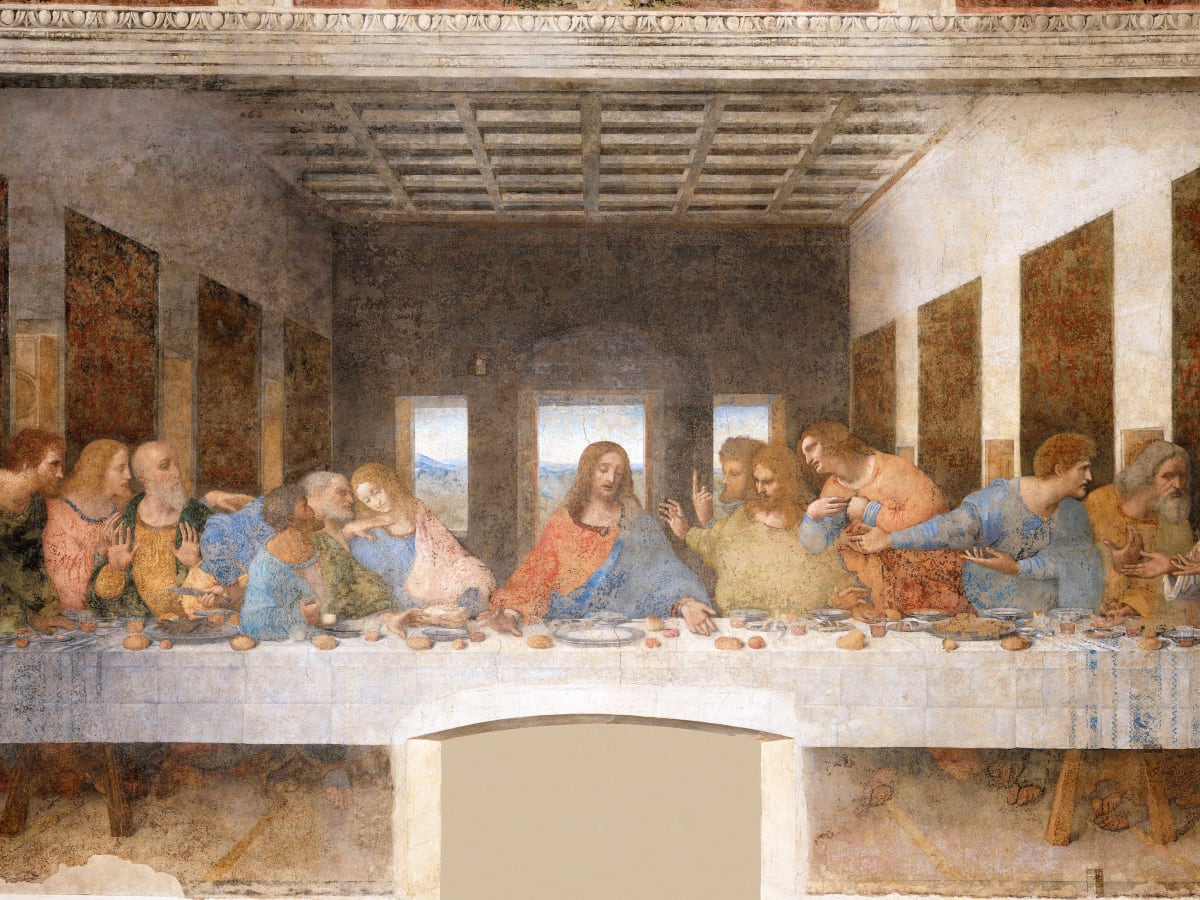Indoors, Renaissance buildings reflected the improving standard of life among the affluent. Smaller rooms were easier to heat than the vast drafty halls of the Middle Ages, and items of furniture began to multiply beyond the medieval complement of built-in beds, benches, cupboards, and tables. Although chairs were still largely reserved for the master of the house and important guests, benches or stools were becoming more common.
Chests were often elaborately painted or carved. New articles of furniture served more specialized purposes: the bookcase to house the new printed books (medieval manuscripts had been kept in chests), the writing desk, and the jewel cabinet, a miniature chest on high legs often encrusted with ivory or inlaid work.
The popularity of brooches, pendants, and other forms of jewelry with intricate gold settings attested both to the wealth and to the taste of upper-class Renaissance men and women. Silversmiths made elaborately etched helmets, shields, and suits of armor better suited for show than for military use. Fine glass was highly esteemed, particularly the elaborate and delicate work that was made in Venice. Both the less affluent and the rich had embroidered household linens and brass and pewter utensils.
When Italians of the Renaissance looked into the mirror they saw a gown or tunic surmounted by a cape or cloak, the whole made of increasingly colorful and elegant material. Personal cleanliness advanced with the custom of the weekly bath and change of body linen; bodily wastes were disposed of in an outside privy or in a “close-stool” (commode) indoors. In Italy table manners became more complex, with the substitution of the fork for the fingers, the fading out of the custom of tossing bones and other debris from a meal onto the floor beneath the table, and the use of easily cleaned tiles or mosaics for flooring. Elsewhere changes came more slowly. In England the fork was not in common use until the seventeenth century, and the floor of the great hall in many houses was still covered with rushes; a fresh layer of rushes and fragrant herbs was added from time to time to counter the stench and insects from the lower layers.
The peasantry probably lived better after the Black Death than before, for those who survived could demand higher wages and use those wages to buy better food, including meat for special occasions. By the mid- fifteenth century, however, white bread and meat were again exclusively for the rich, and the peasant was once again reduced to hard bread and gruel as population increased and the bargaining power of labor declined. The worker in the field expected to wear dirt as though it were clothing. Privacy did not exist for any purpose, and even the rich used corridors and decorative bushes to urinate or defecate. The world stank. At nightfall people were deprived of their sense of sight, for candles were very expensive.
For the rich, luxury did not mean comfort. Travel was difficult, for roads were bad and highway robbers common. There was neither underwear nor soap in any quantity. The perfumes of the East were used to cover the body odors of the West. There was much concern for fashion among men as well as women; the size of a bow, the length of a sleeve, the nature of a ruffle were important matters.
In Renaissance Italy and Spain, blacks were present in significant numbers and had important roles, since the wealthy found it fashionable to have as many black servants as possible. Thousands of slaves were sold in Genoa, Venice, Barcelona, Seville, and Marseilles. From the twelfth century on, the cult of St. Maurice, a black man who had been martyred in the fourth century, grew. Because St. Maurice was depicted as a knight, the nobility gave him special attention. Black Madonnas were venerated in churches in Poland and Spain.
Free blacks were employed in Venice as gondoliers and dock workers, and throughout the western Mediterranean were entertainers and professional fools, or individuals kept for family amusement and as exotic representatives of “the other,” the cultures that stood outside the courts and upper middle class. Attitudes toward blacks were ambiguous: Medieval and early Renaissance art often portrayed the devil as black, but black was also the color of humility and grief. In the sixteenth century, as European vessels began to explore the coasts of Africa, more and more blacks began to appear in port cities.
As early as the thirteenth century, women in Italy began to play a role in trade, primarily as investors. But the quest for beauty, like the quest for God and the quest for knowledge, was now largely a male prerogative. Women were thought to be themselves disorderly and also the cause of disorder; medical theory in the sixteenth century held that the female was composed of cold and wet humors, which made for unpredictable behavior. This disorderliness made women likely to practice witchcraft, according to church authorities. They were dominated by the womb, which was believed to affect their speech and senses.
To control her animal appetites, a woman was encouraged to study, to learn practical arts, and to become physically exhausted working in the home and fields. The Christian humanists urged that women be educated, though only enough to fill subordinate positions. As one learned woman writer, Christine de Pisan (c. 1363-1431), wrote in 1405, “Alas, God, why was I not born into this world as a member of the masculine sex?” She and many male writers were much interested in sexual symbolism.
Since economic relations were seen as a matter of service—artist to patron, mercenary to state, bureaucrat to doge, lay clerk to archbishop—and since society was often convulsed by discussions of sovereignty, political rule, and the fundamental roots of power, women were symbolically employed to indicate hierarchical values. Thus, the relation of wife to husband reflected the general concern for identifying the relationship between subordinates and superiors in law, family function, and social attitude.

